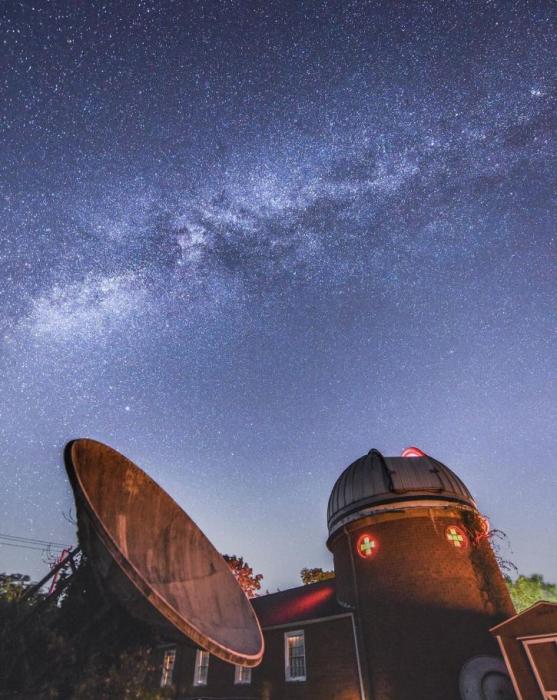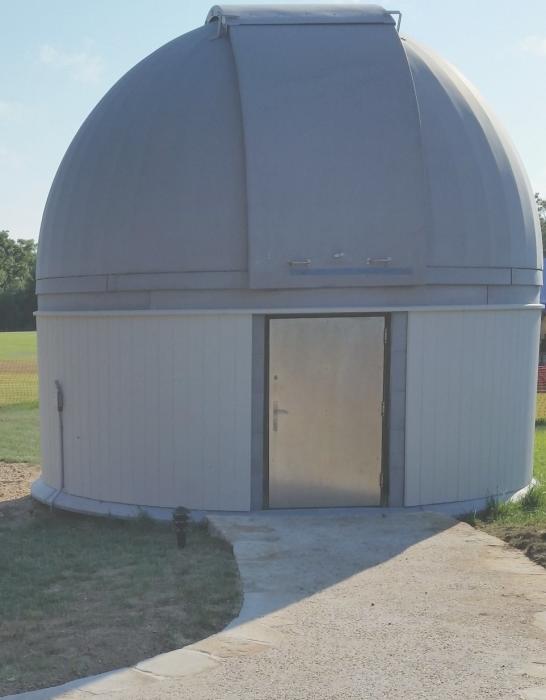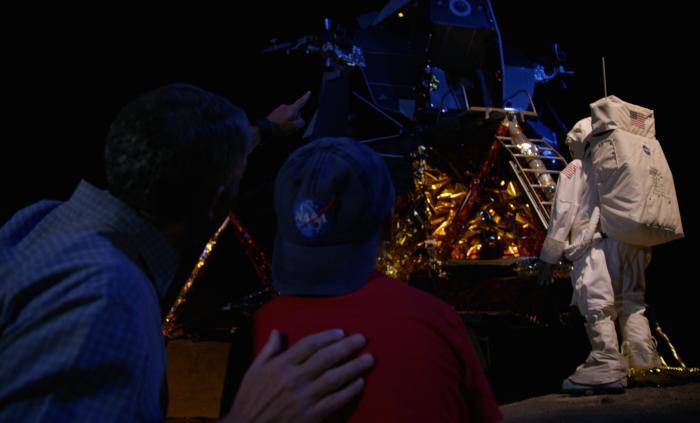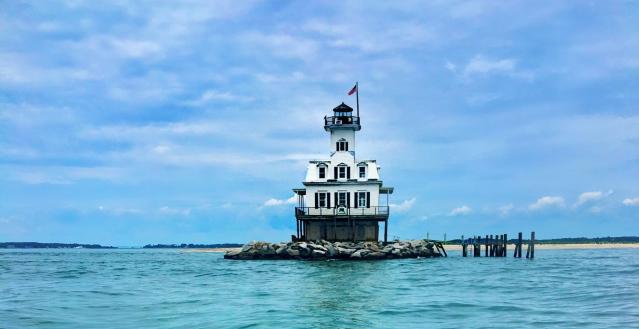When the sun sets over the tranquil shores of Long Island, the night sky transforms into a mesmerizing canvas of stars and planets, inviting locals and visitors to embark on a stellar journey. You’ll find yourself in disbelief that you’re a short distance outside the lights of Broadway, and the further east you head, the more you’ll notice Long Island’s night skies becoming illuminated.
If you’re curious to witness the region’s breathtaking skies for yourself, you’re in luck. Long Island is home to many public observatories and stargazing societies, making it a haven for both seasoned stargazers and amateur astronomers alike. Many facilities offer free admission during the week for viewing the night sky with high-tech aerospace equipment, providing plenty of opportunities for viewing the beauty of the cosmos above. Read on to explore the wonders of stargazing on Long Island!
Custer Institute and Observatory (Southold, NY)

Credit: IG @xchencci
Since 1927, the Custer Institute and Observatory has been serving the North Fork region and is considered Long Island’s oldest public observatory. The institute offers an impressive range of technology for gaining intricate views of the night sky, including one of the largest refracting telescopes of its kind in the country, which visitors can take advantage of every Saturday evening when Custer opens its doors to the public. In addition to housing state-of-the-art equipment, the facility regularly hosts tours, concerts under the stars, and public astronomy lectures. Check out the official website for a full schedule of events.
Mount Stony Brook Observatory (Stony Brook, NY)
With the help of Stony Brook University’s Department of Physics and Astronomy, you can learn from experienced professors and astronomy scientists as you gaze upon the galaxy through the university’s dedicated observation dome. The observatory, located on the roof of Stony Brook’s Earth and Space Sciences building, is known for hosting Astronomy Open Nights for the public, monthly seminars during the fall and spring semesters that include evening lectures followed by a viewing session. As part of an internationally recognized research institution, Mount Stony Brook Observatory is a top location for Long Island’s stargazing scene.
Vanderbilt Museum and Planetarium (Centerport, NY)

Alongside William K. Vanderbilt II’s mansion, a marine and natural history museum, a planetarium, and a park, the Suffolk County Vanderbilt Museum and Planetarium offers stargazing experiences in an unmatched setting with sweeping views of historic property on a waterfront estate. Every Friday night, the museum opens to the public for a free telescope session where guests can see ultra fine details of the moon, nearby planets, star clusters, and other awe-inspiring astronomical phenomena in real-time on a clear night. Before heading to the observatory, catch a show at the Reichert Planetarium for educational family-friendly presentations and laser shows projected within a 60-foot dome. See their website for more information on public observatory sessions and planetarium showtimes.
Hamptons Observatory (East Hampton, NY)

The Hamptons Observatory, formerly known as the Montauk Observatory, is the South Fork’s first astronomical observatory in operation since 2005. The nonprofit institution frequently hosts free, virtual lectures with scientific experts in addition to hosting donation-based private events including “star parties” and portable planetarium shows by request. The Hamptons Observatory will be hosting its next Summer Star Party on August 23, 2023, at the South Fork Natural History Museum where a NASA Solar System Ambassador will host a lecture followed by a guided tour of the sky via outdoor telescopes. Remember to register for this free event in advance before tickets run out!
Amateur Observers’ Society of New York
Established in 1965, the Amateur Observers’ Society of New York (AOSNY) brings astronomy experiences to local communities by hosting free sessions at observatories throughout the region, including some of Long Island’s finest institutions and parks. Open to both members and the public alike, the club hosts regular meetings at the Hofstra University Observatory where guest speakers and viewing sessions are held. During the summer, AOSNY also coordinates outdoor events at the Jones Beach Energy and Nature Center and provides telescopes so attendees can observe the night sky directly over Jones Beach for unmatched stargazing vibes. For more information, see the official calendar for upcoming events.
Cradle of Aviation Museum (Garden City, NY)

Stargazers will also enjoy a visit to the Cradle of Aviation Museum, home to the Catholic Health Sky Theatre Planetarium. Using a high-resolution projector, the planetarium hosts educational shows throughout the week that take viewers on an adventure through the universe. While you’re at the museum, don’t miss out on the Space Gallery, a dedicated space complete with lunar simulators and original space aircrafts that cover over 100 years of history. For a full list of programs, head to the official website for ticket information and planetarium showtimes.


